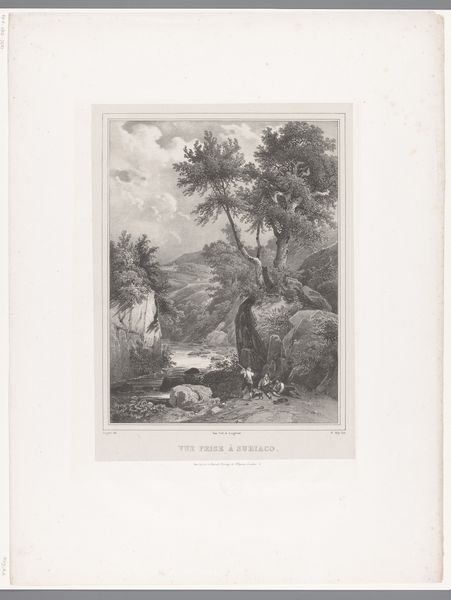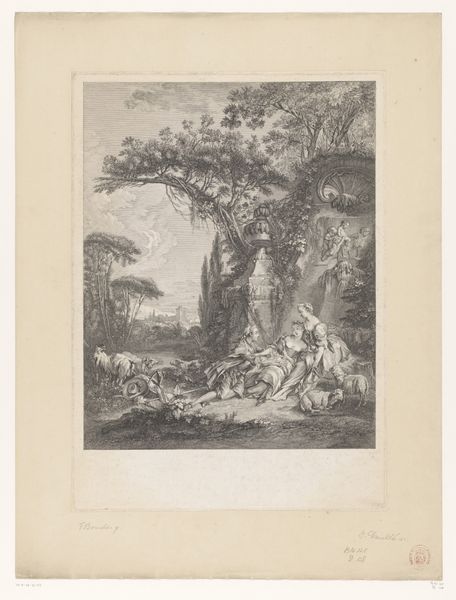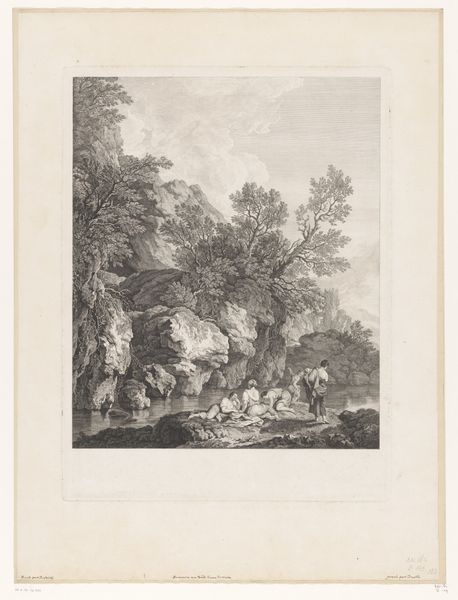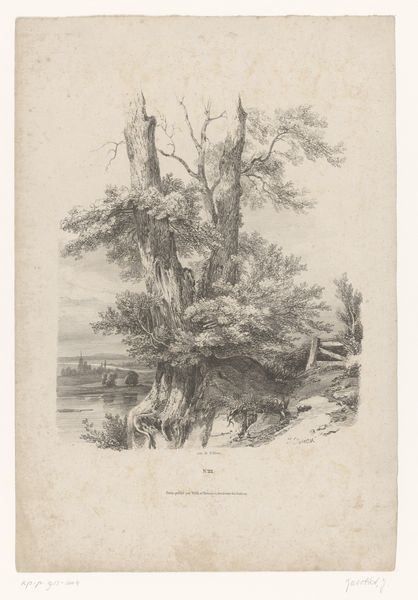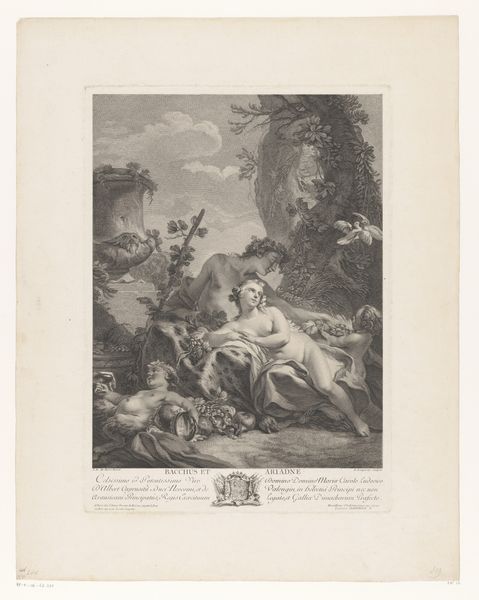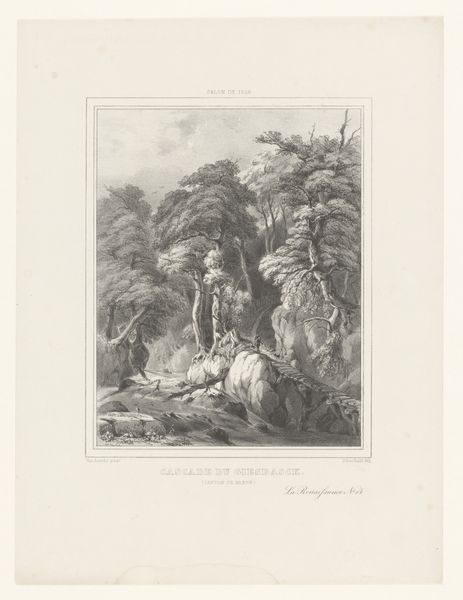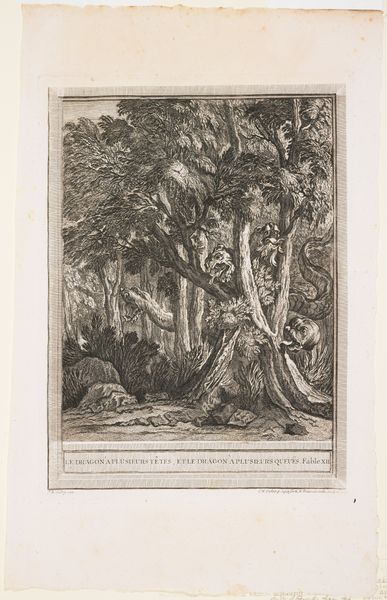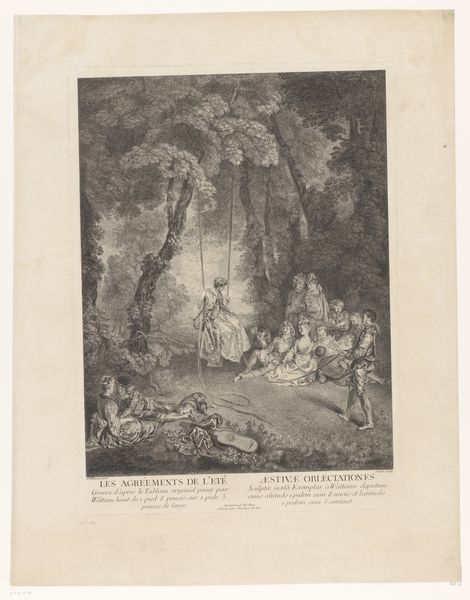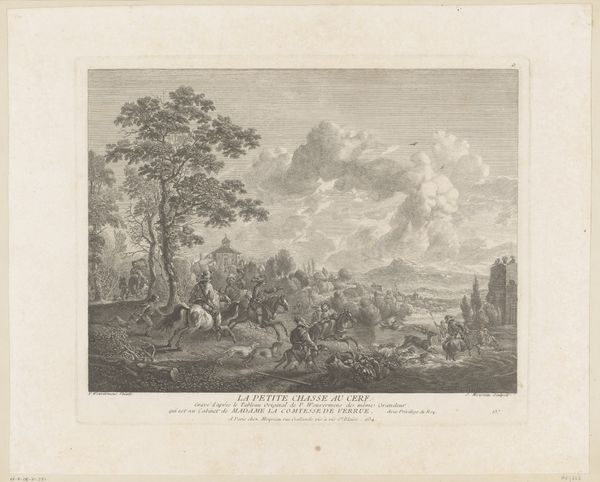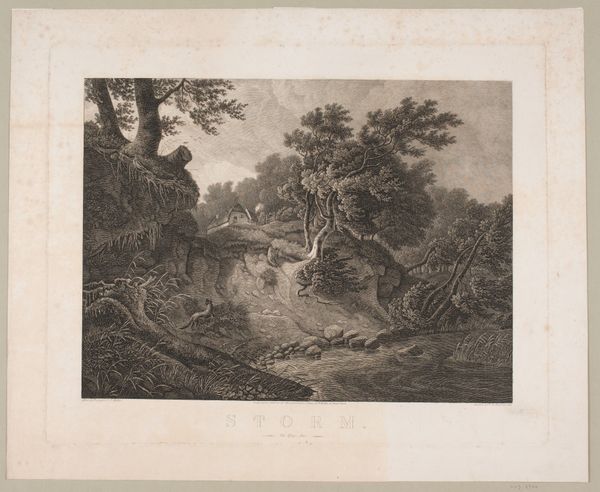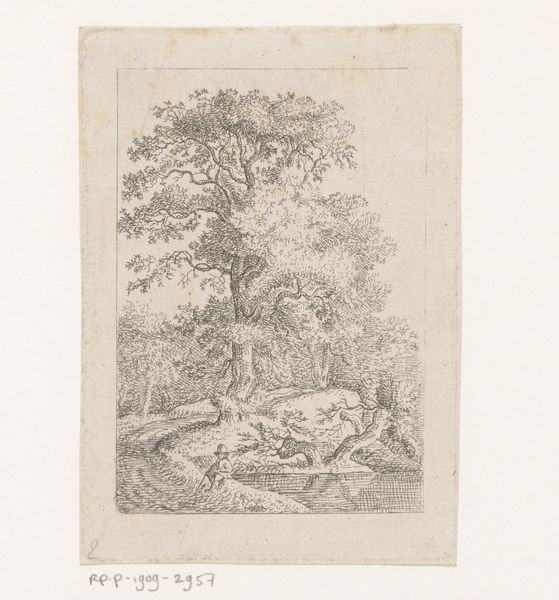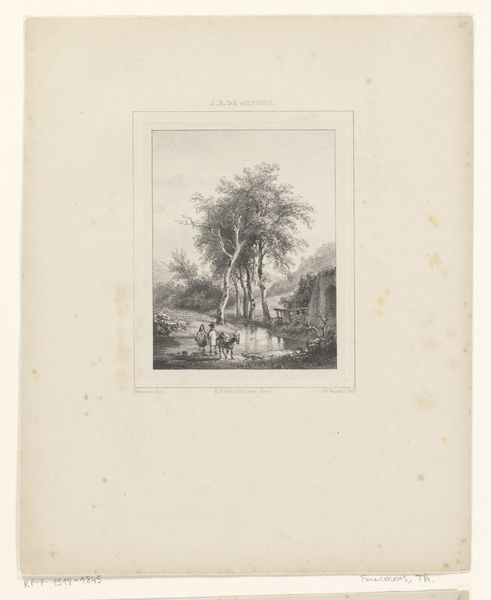
Dimensions: height 482 mm, width 320 mm
Copyright: Rijks Museum: Open Domain
Curator: This engraving by Eugen Neureuther, created between 1851 and 1859, is titled “Berglandschap met reizigers en een gedicht van Goethe,” which translates to “Mountain Landscape with Travelers and a Poem by Goethe.” Editor: It immediately strikes me as steeped in Romanticism, particularly the stark contrast between light and shadow. There's a profound sense of drama unfolding within the print, despite its small scale. Curator: Absolutely. Considering the period and its German Expressionist leanings, the print is layered with narratives. It merges pictorial imagery with text—the poem by Goethe itself becoming part of the visual artwork. The juxtaposition forces the viewer to actively piece together meanings, to participate in a visual discourse between image and poetry. Editor: And what's so compelling is how that discourse plays out regarding socio-political undercurrents. You have travelers depicted at various levels, seeming to exist within different classes. Consider the romanticism often overlooked the brutal realities of societal structure in early-Industrial Germany. Do you think the way travelers and wanderers appear symbolizes societal movement? Curator: It is impossible not to read societal symbols into artwork produced in this context, given Germany’s deep artistic ties and long artistic relationship with exploring themes related to folk tales, landscapes, and travel. We need to also remember what types of institutions, collectors and dealers acquired artworks with German folk styles in their repertoire, particularly during the Nazi-era when such romanticized art saw increased promotion, display and purchase. Editor: Indeed. Neureuther’s choice of engraving contributes further. Its precise detail emphasizes the idyllic while potentially revealing the artist's political inclinations. We see these romantic ideals play out in modern contexts still, so its important to explore that artistic historic thread of political thought as well. Curator: Precisely, which is why, despite its quaintness, understanding its function within social structures and power dynamics helps it engage more profoundly with current political considerations around power, migration and land usage. Editor: Right, moving beyond its superficial aesthetics reveals more critical layers that allow us to re-interpret those initial sentiments more mindfully. Curator: A valuable perspective; by addressing this work in this nuanced context it reminds me of the artwork’s unique staying power as a reflection of its original time and contemporary resonance.
Comments
No comments
Be the first to comment and join the conversation on the ultimate creative platform.
